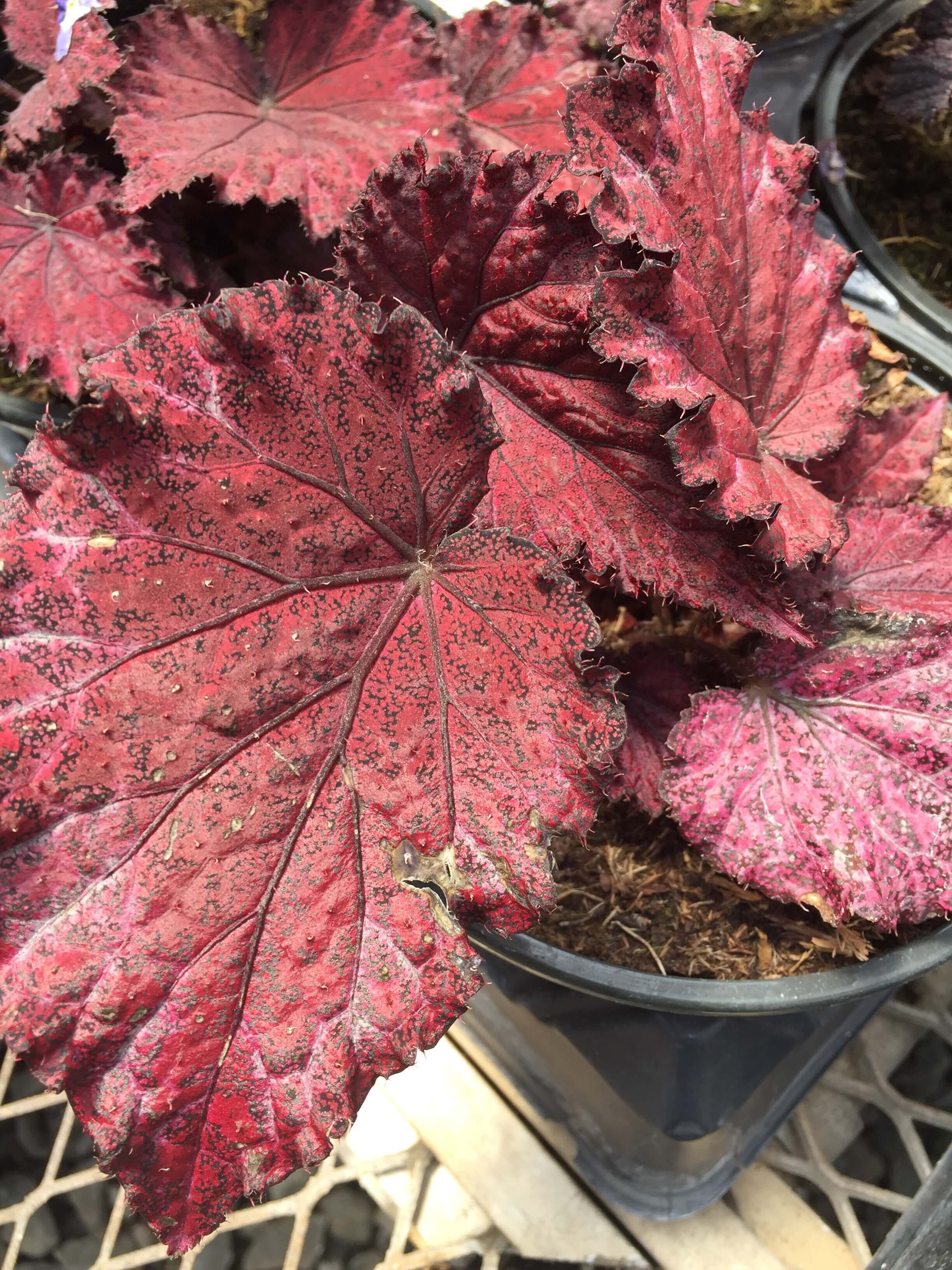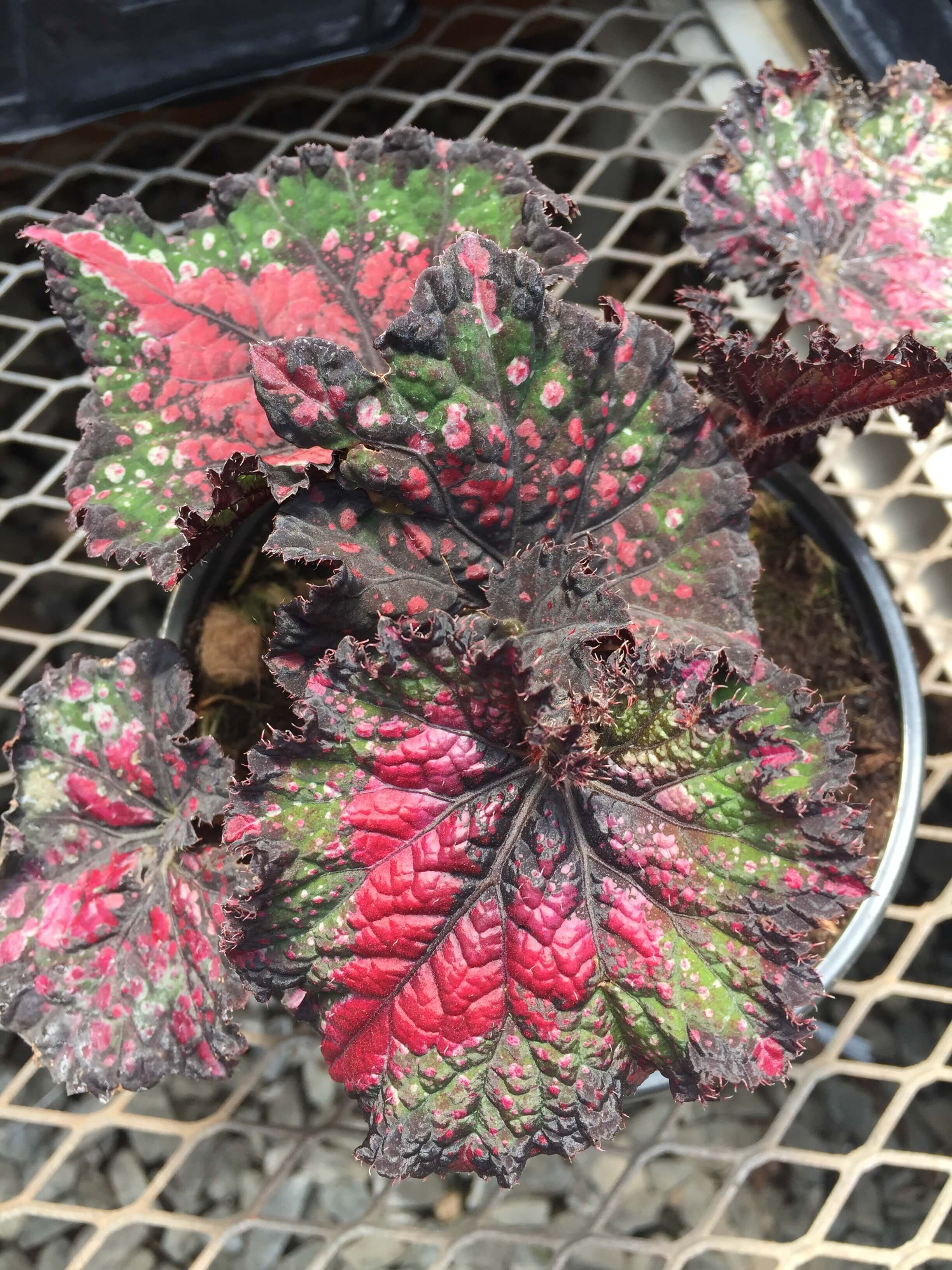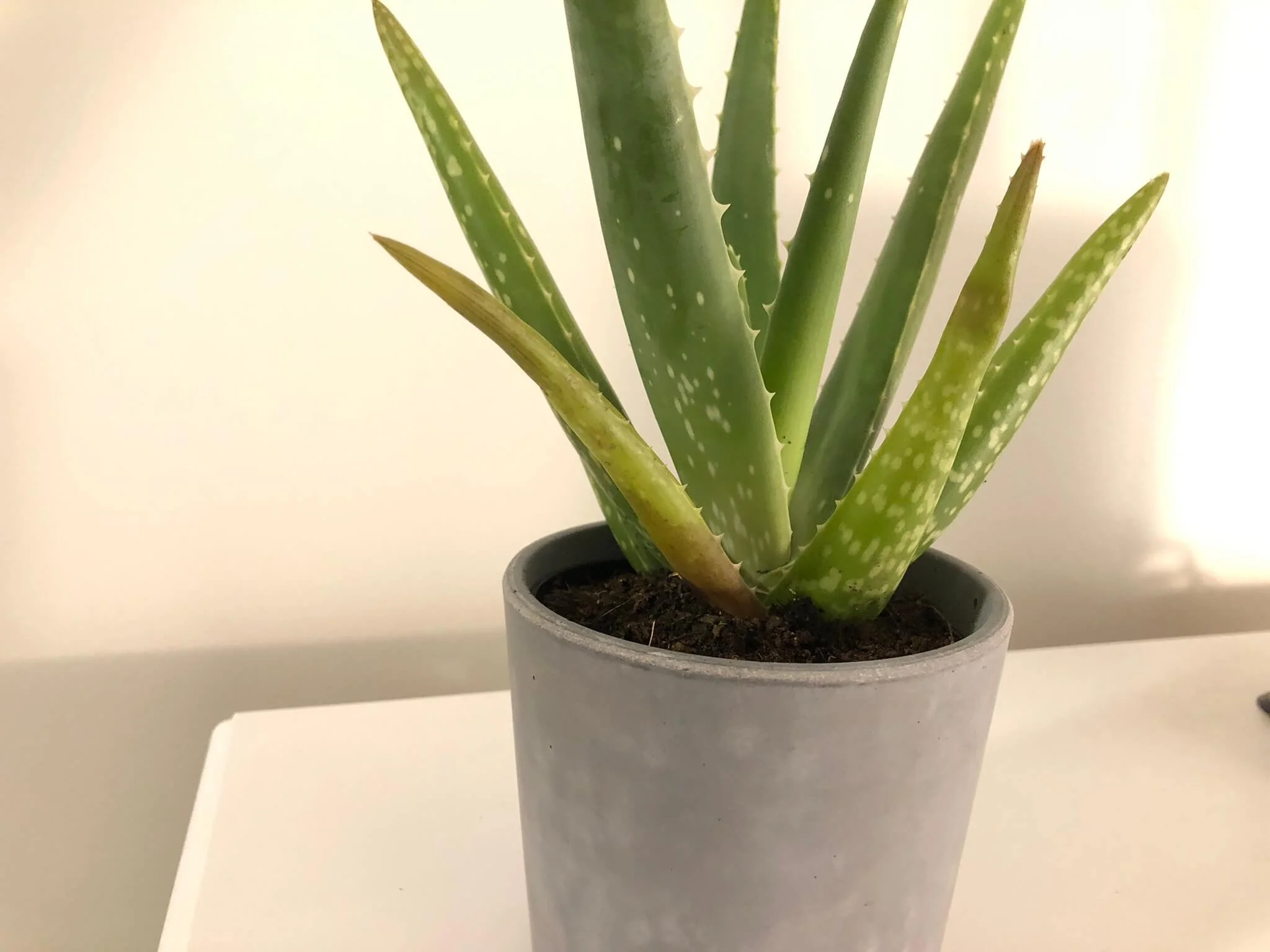Growing Painted Leaf Begonias (Begonia Rex) Like a Pro
Begonia Rex
Painted-leaf begonias also know as Begonia Rex is one of the hardiest houseplants - not only that, they're also one of the prettiest! These painted-leaf begonia plants have big, gorgeous leaves that range from red to pink to silver. They're often grown for their beautiful foliage and unique leaf shapes.
Painted-leaf begonia plants will thrive when given the right care. How can painted-leaf begonia plants be given the right care? Read on for tips and tricks to make painted-leaf begonias thrive in any environment.
The items listed are accompanied by affiliate links, meaning I earn a small commission if a purchase is made through my links. This has no impact on the cost to the consumer. I link to products this way whenever possible, and it has no bearing on the products I choose to review or recommend.
Painted-Leaf Begonia Care Cheat Sheet
Here is the necessary information you need to know when caring for a painted-leaf begonia.
Scientific Name: Begonia Rex
Common names: Rex Begonia, Painted Begonia, Painted-leaf Begonia, Fancy-leaf Begonia, King Begonia
Origin: India
Growing Zone: USDA Hardiness Zone 10-11
Size: Can grow up to 24 inches
Colors: Red, silver, pink, purple, green, white, variegated
Light: Bright, indirect light
Watering: Likes moist soil, water less during the winter months
Temperature: Like a warmer environment- must be a minimum of 60 F
Soil: Well-drained
Fertilizer: A liquid fertilizer during the growing season
Propagation: Rhizomes, stem or leaf cuttings
Pruning: Remove dead flowers and leaves
Pests: Mealybug, aphids, red spider mites
Diseases: Powdery mildew, root rot, botrytis
Toxicity: Can be toxic to pets.
Begonia Rex Care
Caring for Rex begonias is easy. They are an extremely popular houseplant due to their large and colorful foliage. The painted leaf begonia plant can be grown in a variety of environments - from the kitchen window to an office desk.
Here are some of the important factors you need to take into consideration when caring for your painted-leaf begonia.
Light
Rex Begonia likes to be placed in a bright location but that is away from the sun's direct rays. Begonia Rex is fairly hardy and tolerant of many things but not direct sunlight. Too much sun can burn the plant's leaves.
During the winter months, a few hours of morning sunlight are beneficial. Just remember to turn your pots periodically so your foliage will be balanced when it grows. You want it to look full and bushy.
If you don't get bright, indirect light in your home, you can grow your painted-leaf begonia under fluorescent lights.
Water
The painted-leaf begonia likes moist soil. It is better to water less often and when the plant needs it, rather than overwatering your painted leaf begonias. This will help keep them pest-free because they won't have time for fungus or mold to grow in their roots. A good rule of thumb is to allow the top of the soil to dry out before watering.
During the summer months, painted-leaf begonia plants are growing more actively and should be watered as needed. Whereas during the winter months, you should water your rex begonia less because it goes dormant and is more likely to drop its leaves.
When watering, always water below the leaves. You want the foliage to stay dry to prevent rot.
Temperature
Rex begonias tend to like average warmth and need a minimum temperature of 60 F in the winter months. Any drastic temperature fluctuations can damage painted-leaf begonia plants. So make sure your houseplant isn't near any drafty windows or spots during the colder months. During the summer months, an ideal temperature for begonia rex is about 75 F.
Soil
The secret to healthy Rex begonias is soil that drains well. This will help prevent overwatering and root rot so you can spend more time enjoying the beauties while they last! A good potting mix to use that is well-draining is potting mixes for African violets.
Humidity
In order to get painted-leaf begonias to thrive, it is important that the humidity be high. The best way to achieve this is by adding a layer of damp peat moss around the painted-leaf begonia plant. Be careful not to let the painted-leaf begonia plants sit in water for too long as they might rot.
It's also a good idea to mist the air (never the plant itself) in which painted-leaf begonias are located throughout the day since more frequent watering will make them more susceptible to pests and diseases.
If painted-leaf begonias are exposed to blasts of cool air from heating systems or air conditioners, they may become shocked and damaged.
Pot Size
When picking out your container or pot, painted-leaf begonias should be given plenty of room so that the rhizomes can spread. They don't need much height as they are fairly shallow-rooted plants, but you can always add a layer of pebbles or rocks to the bottom. Just make sure your pot has a drainage hole at the bottom.
Fertilizer
When it comes to feeding your Rex begonias, you should use diluted water-soluble plant food. The painted-leaf begonia needs fertilizer during the growing season (when new growth begins), but make sure not to feed them too much to avoid leaf burn or overfeeding which can lead to root rot and other conditions.
A good rule of thumb is to feed your Begonia Rex once every two weeks during the spring with balanced plant food. Just remember to dilute it to about 1/4 of the strength as Begonia Rex will not need heavy feeding.
Once the weather starts to change, you can slow down feeding and during the winter months, there is no need for fertilizer.
Pruning
Luckily rex begonias don't need a lot of pruning. If it gets too leggy then you can cut them back to make them more compact and full. Cut back any dead foliage and discard it.
Begonia Rex are an extremely popular houseplant due to their large and colorful foliage.
Propagation
Rex begonias propagation may occur from rhizomes, stem, or leaf cuttings.
Leaf cuttings will be one of the easiest ways to grow painted-leaf begonias. It is preferred over other methods.
Steps to propagate from leaf cuttings:
Cut a healthy leaf off from the base of the main stalk of the plant.
Remove the stalk.
Using a sharp knife, cut across the main and secondary vein on the underside of the leaf. Making the cuts about an inch apart.
Fill a seed tray with a rooting compost and lay the back of the leaf flat against the compost. Use small stones to weigh down the leaf.
Place the leaf in a warm area where it will receive bright indirect sunlight.
Make sure the compost does not dry out.
Once a new plant grows, you can pot them.
Propagating is a good idea since Begonia Rex only has a lifespan of about a year or two. So if you like these plants, make sure to take some cuttings and propagate new plants.
Pin for later!
Common Problems
Like any type of flower, Rex begonias are susceptible to a variety of pests and diseases.
Pests
Some pests that are commonly seen on Rex begonias are red spider mites, aphids, and mealybugs.
Red spider mites are especially dangerous because they will suck the plant's fluids and eventually kill it. To control these pests, use horticultural oil in a spray bottle to coat your painted-leaf begonia plants every few days.
Mealybugs are common on painted-leaf begonias and can be problematic because they secrete a substance called honeydew that causes sooty mold which is unsightly, black, and attracts flies. To prevent this from happening, use insecticidal soap sprays or neem oil in a spray bottle.
Aphids are also common painted-leaf begonia pests and can be controlled with insecticidal soap or neem oil in the same way.
If you notice any of these problems on your painted-leaf begonias, get rid of infected leaves immediately to help prevent spread.
Diseases
Since painted-leaf begonias like high humidity levels, they are susceptible to fungi or bacteria. The most common diseases Rex begonias may face are powdery mildew, root rot, and botrytis.
Powdery mildew can be identified by white, powdery spots on the leaves and stems of plants. If you notice powdery mildew, cut off the affected leaves and spray them with a fungicide. It is also important to move them away from other Begonias. To prevent powdery mildew, make sure to avoid overly-damp environments and low temperatures. Also, make sure you have good air circulation.
Root rot is a problem that can cause leaves to turn yellow and fall off. To prevent root rot you should avoid overwatering your plant. Begonias are very particular about their watering needs.
Botrytis aka "gray mold" is a fungus that grows on the surface of leaves and can be identified by black grey patches or spots appearing on painted-leaf begonia plants. Botrytis causes leaf drop, so if you notice this problem, remove infected plant parts as soon as possible and spray with a fungicide. Remember to move them away from other plants. To prevent botrytis from occurring avoid overly damp conditions, give the plant more light, and improve ventilation.
The best way to prevent these problems is by providing your Rex begonia with good light levels, proper watering, and adequate humidity levels.
Toxic to Animals
Rex begonias can be toxic to pets. So if you have a dog or cat at home, keep painted-leaf begonias out of reach or in a place where they are inaccessible.
Rex Begonia Varieties
This is the Jurassic Watermelon Rex Begonia.
The original Rex Begonia from India does not exist and most of the plants you see are actually hybrids. They have been created to achieve that beautiful, colorful foliage. Some of the most popular varieties are Merry Christmas, Silver Queen, Yuletide, Her Majesty, President Carnot, Helen Teupel, and King Edward IV. There are also miniature Rex begonias as well.
FAQS About Rex Begonias
Why are the leaves fading in color and looking bleached?
This problem can be caused by too much direct sun exposure. Try rotating the plants and moving them to a different location that will receive bright but indirect light.
Why is my Begonia Rex losing leaves?
If your painted-leaf begonia is losing leaves, it may be over or under-watered. You should water them with room temperature or lukewarm water and when the top part of the soil feels dry. It could also be due to not getting enough sunlight. Pay attention to both the light and water levels.
Do Rex Begonias flower?
Painted-leaf begonia, also known as Begonia Rex are grown for their brightly colored foliage. These plants produce flowers that should be removed, however, the blooms are rather insignificant.
Care Tips for Rex Begonias
Rex begonias are a beautiful and colorful addition to any garden or home. These painted-leaf plants have an interesting history as well, but what’s most important is how you care for them. In this article we’ve covered the basics of growing Rex begonia plants successfully including lighting needs, watering requirements, fertilizing tips, and toxic risks with pets. These plants make an excellent choice to add a pop of color to your home and space.
















